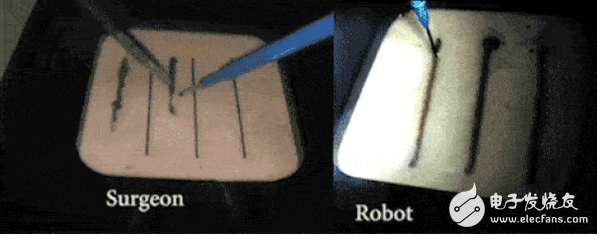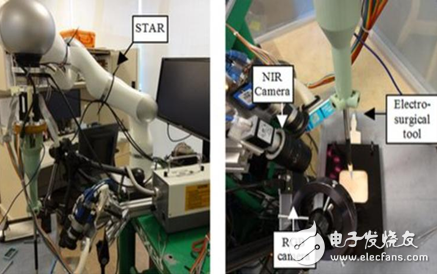It is no longer news that robots enter the medical field. There are precedents in the operating room, but the robots also pick up the scalpel. This is a bit shocking. Many netizens are not joking about human life! If something goes wrong, regret is out of reach. The operating room has quietly entered the robot. It picks up the scalpel more than humans. Do you dare to use it?
The operating room has long been a place for robots, such as the robot-assisted surgery system that has been used in hospitals for several years. In those fine surgery, the surgeon can control the robot's instruments while watching the enlarged picture on the screen. 3D HD endoscope.
Recently, a research team in the United States released the latest research results, demonstrating that robots are more precise than surgeons when cutting human tissue.

The robot, called Smart TIssue Autonomous Robot (STAR), was developed by Azad Shademan. At the International Conference on Intelligent Robotics and Systems (IROS 2017) in the United States, STAR's inventors presented recent experimental results: compared to professional surgeons, robots are able to cut tissue more precisely, around the Tissue damage is also smaller.
In this experiment, the researchers used three tissues: skin, fat, and muscle, but this was all pork bought in the butcher shop. The difficulty of cutting the tissue, people who have cooked the meat can probably understand it.
When performing a cutting task, STAR follows the pre-defined cutting path while continuously adjusting the cutting angle to accommodate the various resistances generated during tissue cutting.
In the control experiment, both the STAR robot and the surgeon needed to cut a five-cent line on the soft tissue.
Control experiments show that robots are more precise than humans
In the final phase of the experiment, the research team asked the STAR robot to simulate a tumor resection, which was to remove a piece of clay from a piece of pig fat. To increase the difficulty, the "tumor" was covered with a thin soft tissue. Once again, the STAR robot demonstrated the accuracy of the cut.
The R&D team said that the next step will be to train STAR to simulate more complex tumor resections, which require image tracking cameras to be upgraded and more precise surgical path planning software.

In 2016, STAR has demonstrated its suturing capabilities, and developers have used this system to allow surgical robots to perform anastomosis in pigs. At that time, 40% of the time required for surgery to be fine-tuned, and the remaining 60% did not require manual intervention.
According to the public information displayed on LinkedIn, Azad Shademan, the first author of STAR's research results last year, has joined the company that is the Da Vinci robot as a surgical robotic engineer.
Flange Fan ,Exhaust Fan Flange,Ceiling Fan Motor,Cooler Fan Motor
Hangzhou Jinjiu Electric Appliance Co Ltd. , https://www.jinjiufanmotor.com